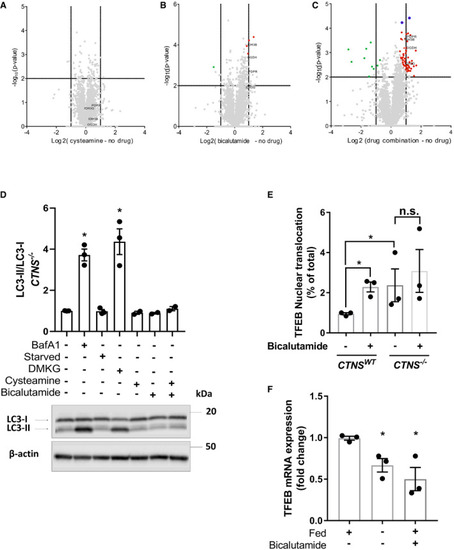F
- ID
- ZDB-FIG-210714-49
- Publication
- Jamalpoor et al., 2021 - Cysteamine-bicalutamide combination therapy corrects proximal tubule phenotype in cystinosis
- Other Figures
- All Figure Page
- Back to All Figure Page
|
Volcano plot illustrates significantly differentially abundant proteins ( Western blotting and densitometric analyses for LC3‐II/LC3‐I ratio in CRISPR‐generated Quantification of TFEB‐GFP nuclear translocation in Data information: Data are expressed as mean ± SEM. * |

